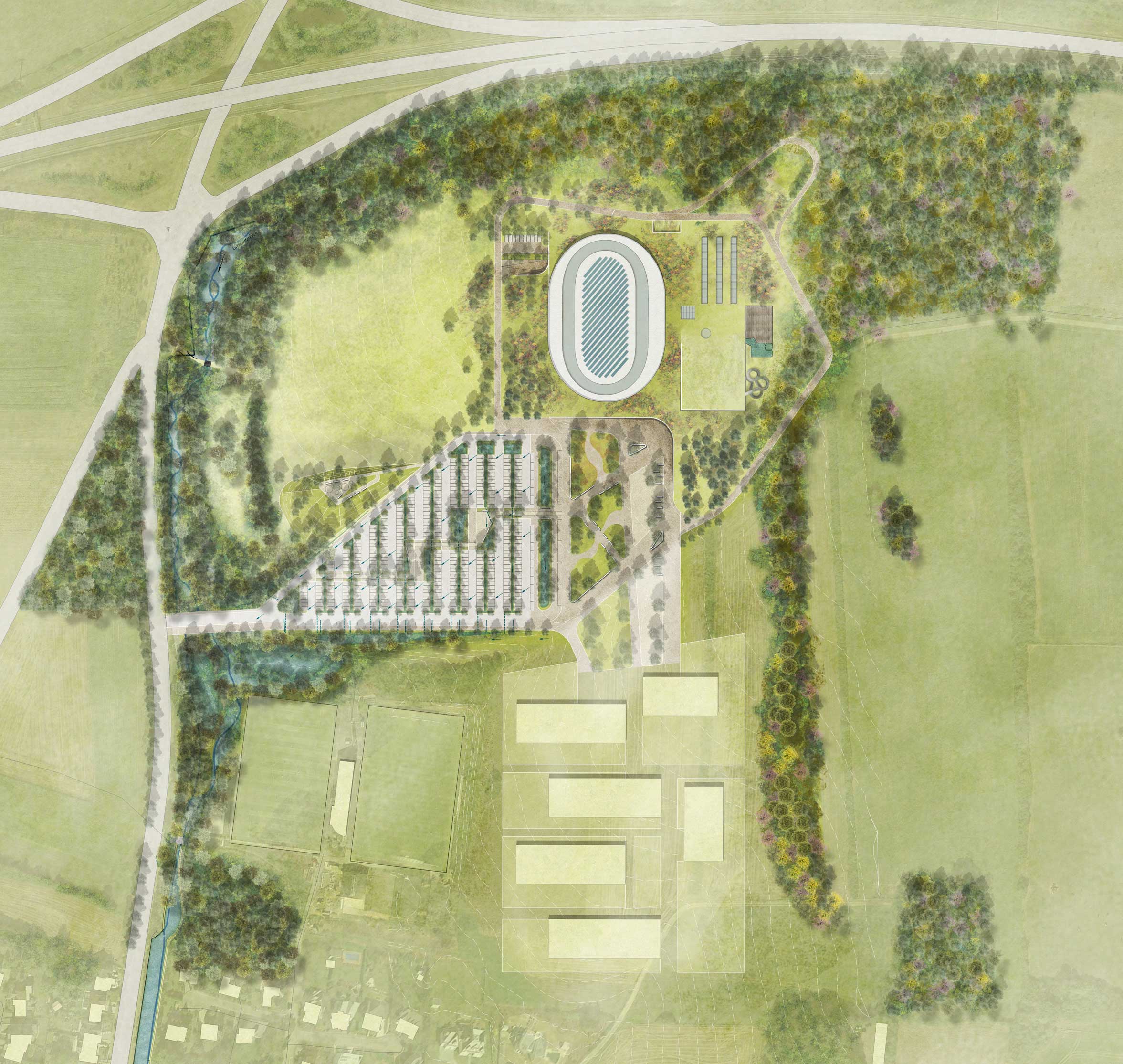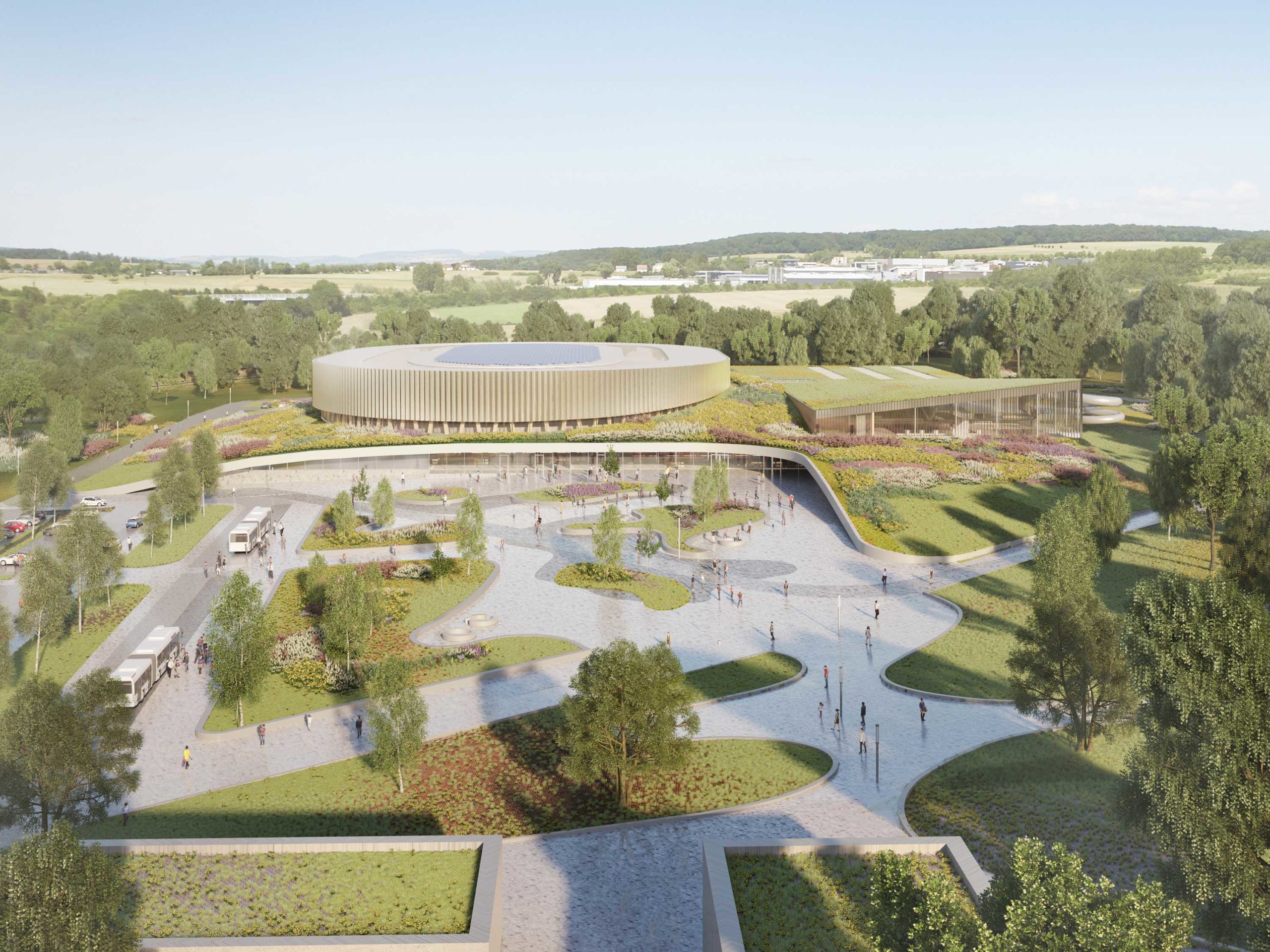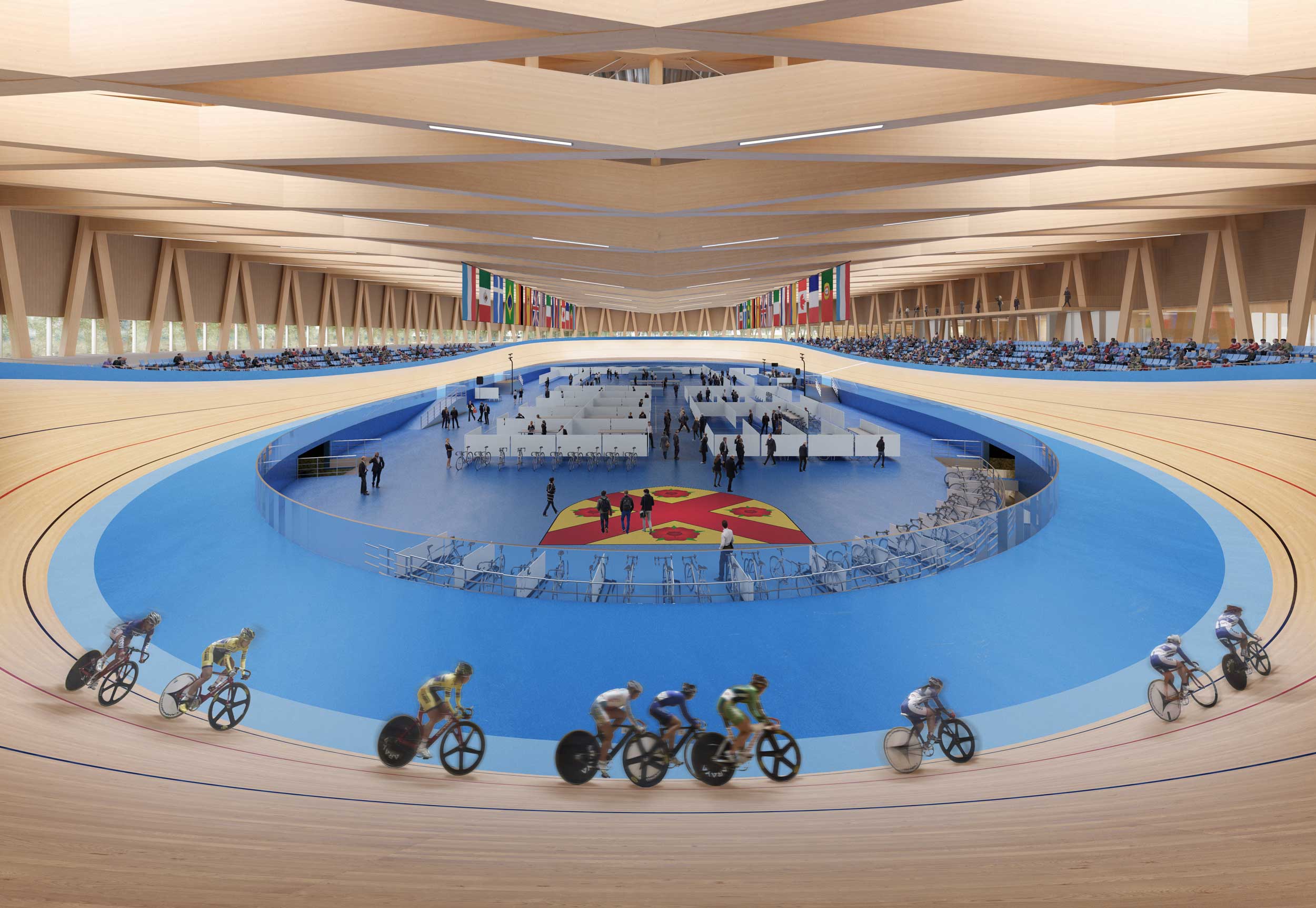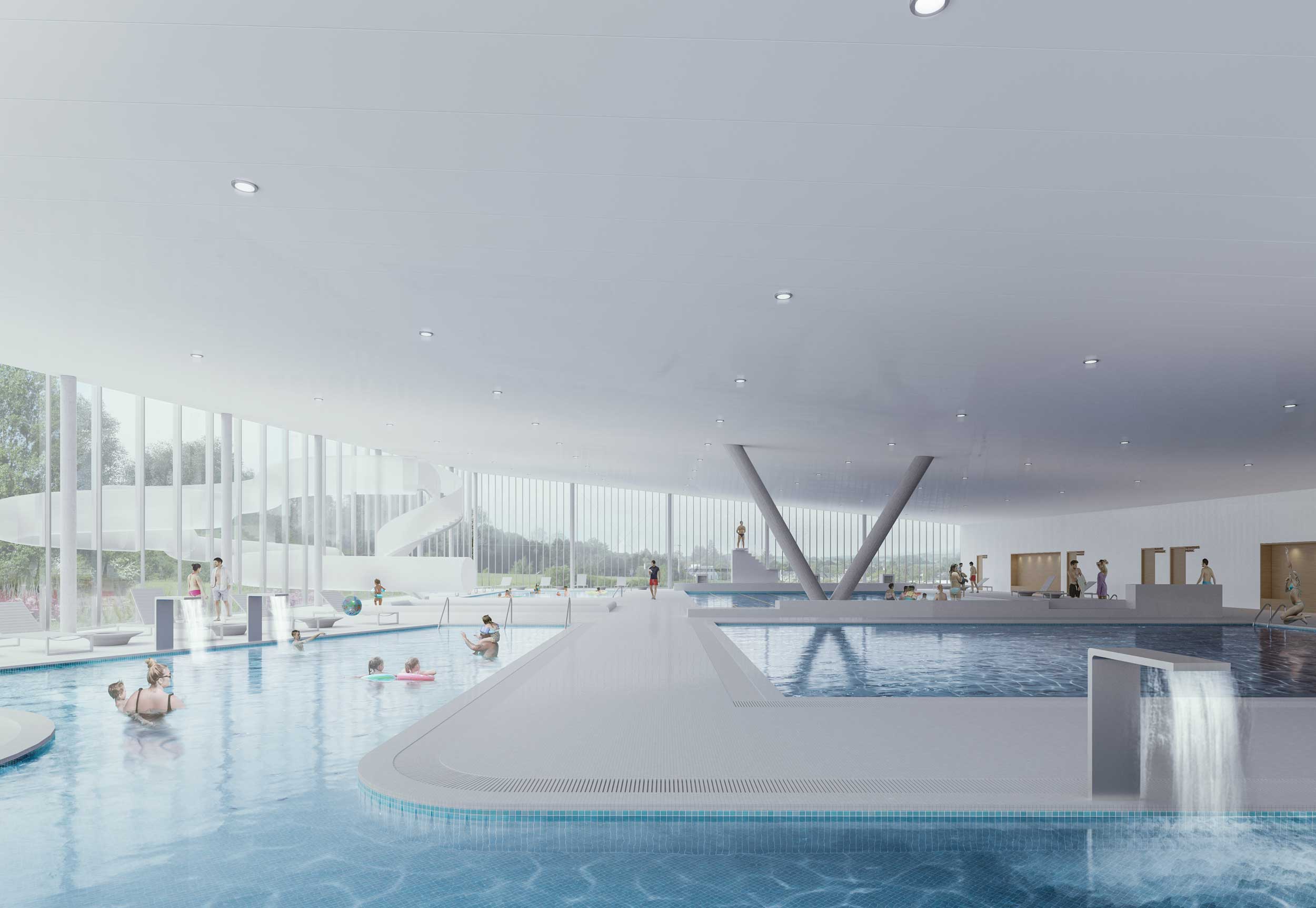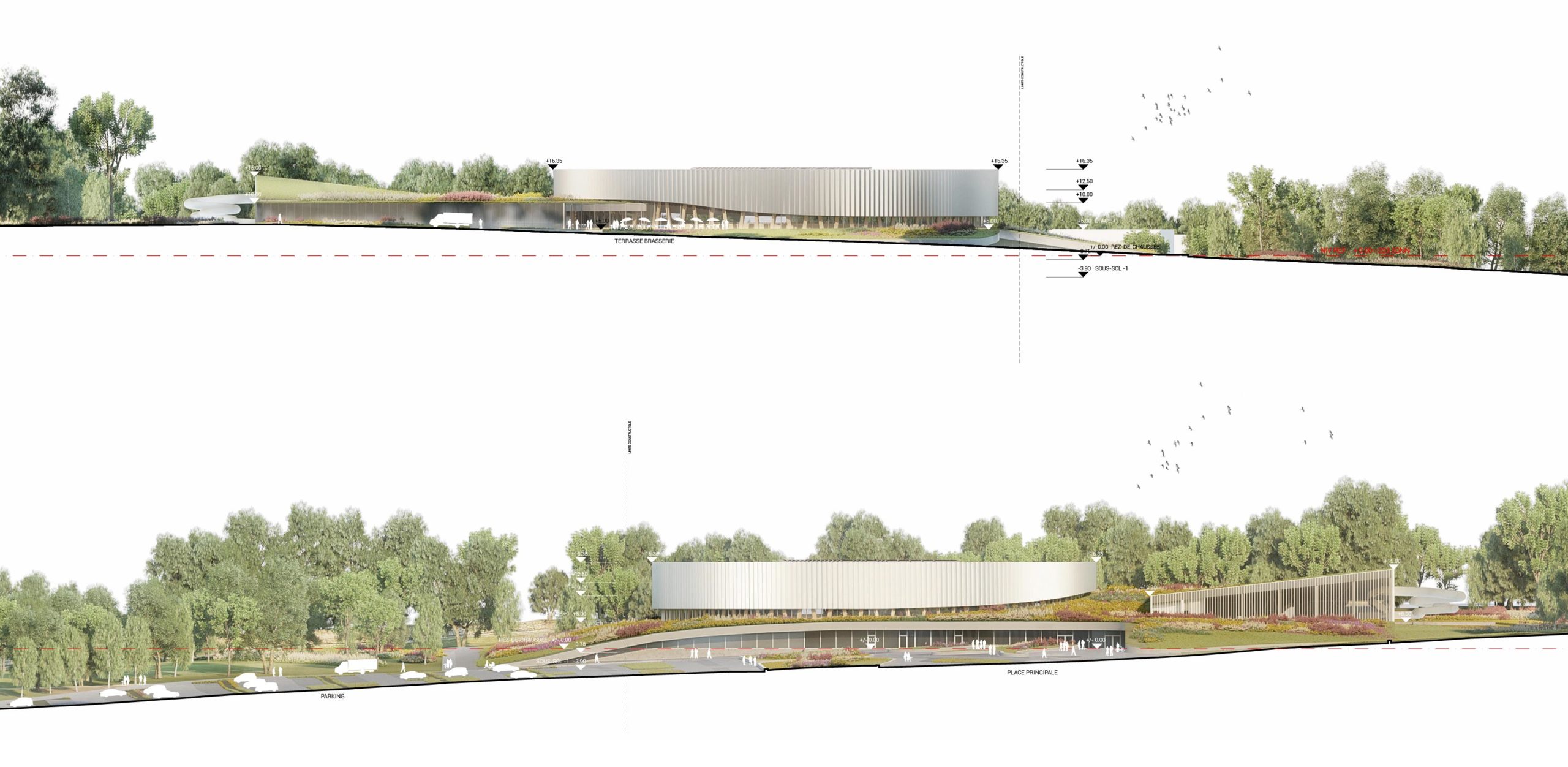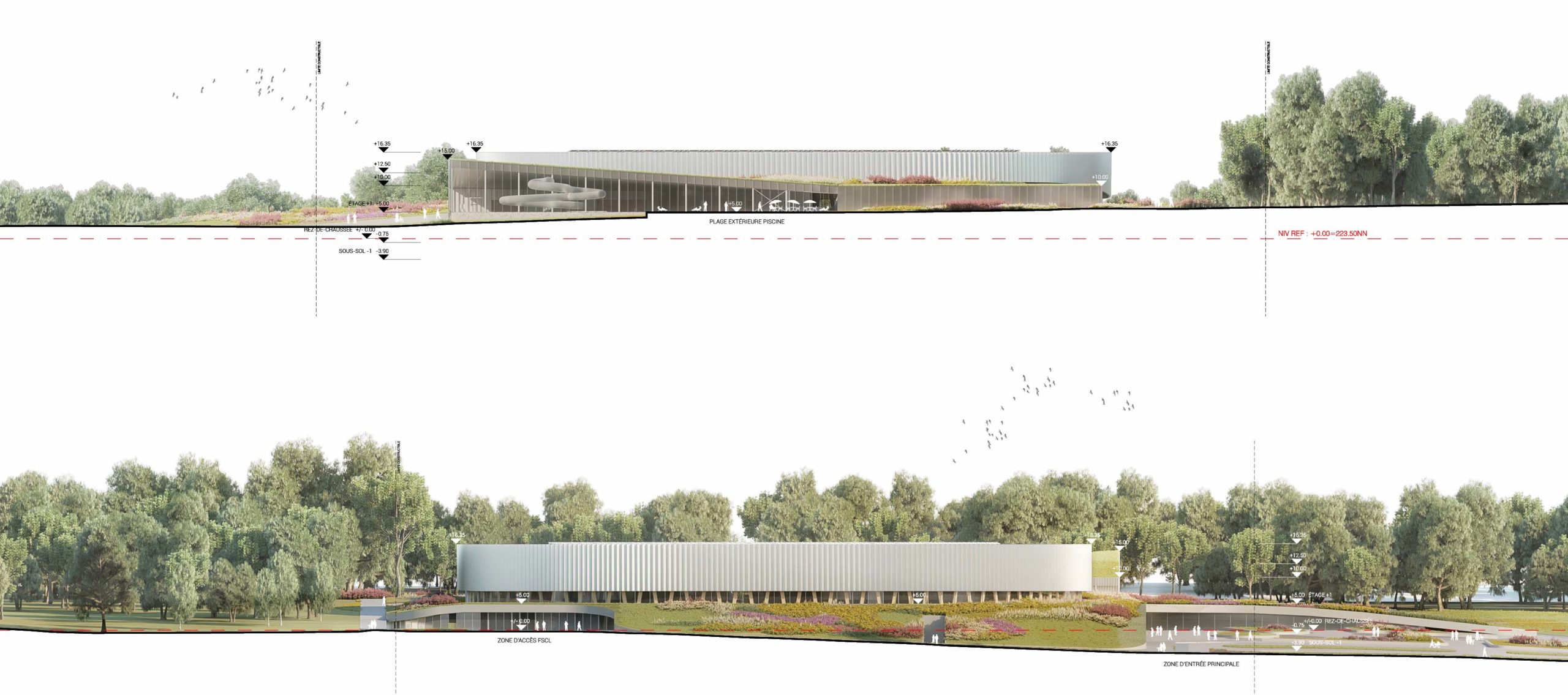Metaform’s winning entry for Luxembourg’s first and only velodrome – a collaboration with Dutch-based Mecanoo architects – is an elegant proposal that radically rethinks the arena typology. It is part of a regeneration programme of more than 26 hectares that aims to make the region a leading destination for sport and recreation.
The velodrome is located at the eastern edge of Mondof-Les-Bains in the south of the country, famed for its thermal baths and pristine countryside. It features a Union Cycliste Internationale (UCI) approved track that is 250m long, has slopes of up to 42 degrees and is made entirely of wood. This enables the facility to accommodate a number of national and international competitive indoor cycling disciplines.



